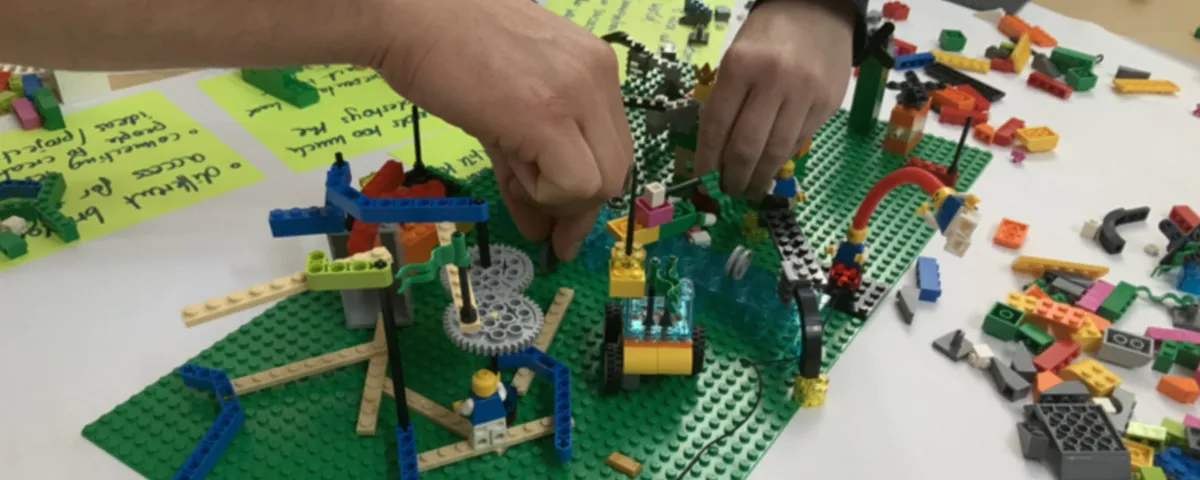
iEER is an Interreg Europe funded flagship project that has been revived for 2022, bringing together 8 regions. Originally initiated in 2016 by a group of regions awarded with the European Entrepreneurial Region label, iEER defined smart paths and solutions to boost regional entrepreneurship ecosystems supporting young entrepreneurs in 2016-2020. This time supporting a sustainable and socially inclusive recovery from the Covid-19 pandemic.
iEER partners and stakeholders gathered in sunny and summery Brandenburg at TH Brandenburg for an eventful workshop on green and digital entrepreneurship on May 24-25. The iEER interregional events focus on learning from each other and encouraging and inspiring future actions.
On the second conference day, participants were grouped for a workshop to shape the discussions into further action. By using LEGO® Serious Play®, ideas were collected that could be transformed into action plans. At the end, the outcome of the workshop was surprisingly convergent in view of future cooperation for driving a green and digital transition: there is a huge need for collaboration with multiple actors, where information and results are openly and easily accessible; a community of knowledge that covers all of society.
LEGO® has been encouraging children to use their power of imagination to turn their dreams into reality. We adults see LEGO® as toys for children and not as tools for solving serious problems. This is the first barrier for applying LEGO® Serious Play®.
To facilitate a successful LEGO® Serious Play® workshop we need to make the following points clear, why this method can help:
More than 20 participants representing 8 partners from 7 different regions, most of whom can communicate fluently in English. Nevertheless, for most people, this is a second language. This was how LEGO® Serious Play® helped.
Last but not least, we want to thank the organization of TH Brandenburg, all the participants of the iEER network and the co-author of this post Maria Filipschack.
Culture is what people do when no one is looking Culture...
Best TRIZ Conference ever – that is the prevailing feedback after...
Innovation is a buzzword AND an important success factor for companies...
You are currently viewing a placeholder content from Google Maps. To access the actual content, click the button below. Please note that doing so will share data with third-party providers.
More Information